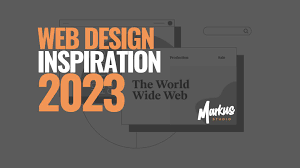The Art of Web Design: Crafting the Best Online Experiences
In today’s digital age, a well-designed website is crucial for any business or individual looking to make a mark online. The best web design goes beyond aesthetics; it encompasses usability, functionality, and user experience.
So, what makes for the best web design? Here are some key elements:
Responsive Design
A responsive website adapts to different screen sizes, ensuring a seamless user experience across desktops, tablets, and smartphones. With mobile usage on the rise, responsive design is essential for reaching a wider audience.
Intuitive Navigation
Clear navigation helps users find what they’re looking for quickly and easily. A well-organised menu structure and logical flow of information enhance the user experience and keep visitors engaged.
Visual Appeal
Aesthetics play a significant role in web design. A visually appealing website with high-quality images, complementary colour schemes, and engaging typography can leave a lasting impression on visitors.
Fast Loading Speed
In today’s fast-paced world, users expect websites to load quickly. Optimising images, minimising HTTP requests, and leveraging browser caching are some techniques to improve loading speed and retain visitors.
Engaging Content
Compelling content is key to keeping visitors interested and coming back for more. Informative articles, captivating visuals, and interactive elements can enhance user engagement and drive conversions.
SEO-Friendly Design
Search engine optimisation (SEO) is vital for improving visibility in search engine results. Incorporating SEO best practices such as meta tags, keyword optimisation, and mobile-friendliness can help boost organic traffic to your site.
In conclusion, the best web design combines aesthetics with functionality to create an engaging online experience for users. By incorporating responsive design, intuitive navigation, visual appeal, fast loading speed, engaging content, and SEO-friendly practices into your website development process, you can set yourself apart in the digital landscape.
Top 6 Tips for Exceptional Web Design: Enhancing User Experience and Visual Appeal
- Keep the design simple and clean for better user experience
- Ensure your website is mobile responsive for accessibility on all devices
- Use high-quality images and graphics to enhance visual appeal
- Incorporate intuitive navigation to help users easily find information
- Optimise page loading speed for improved performance
- Consistent branding and colour scheme across the website for a cohesive look
Keep the design simple and clean for better user experience
When it comes to achieving the best web design, simplicity and cleanliness are key factors that significantly enhance the user experience. By keeping the design simple and clean, with minimal clutter and distractions, visitors can navigate the website effortlessly and focus on the essential content. A clean design not only improves usability but also conveys professionalism and sophistication. Embracing simplicity in web design leads to a more intuitive and visually appealing interface that resonates with users and encourages them to engage with the content effectively.
Ensure your website is mobile responsive for accessibility on all devices
In the realm of best web design practices, ensuring that your website is mobile responsive is paramount for accessibility on all devices. With the increasing use of smartphones and tablets to browse the internet, a mobile-responsive design allows your site to adapt seamlessly to different screen sizes and resolutions. This not only enhances user experience but also expands your reach to a wider audience, ultimately improving engagement and driving conversions. By prioritising mobile responsiveness in your web design strategy, you can create a user-friendly and inclusive online environment that caters to the diverse preferences of modern-day users.
Use high-quality images and graphics to enhance visual appeal
Utilising high-quality images and graphics is a fundamental aspect of effective web design. By incorporating visually appealing elements, such as vibrant photographs and sleek graphics, a website can instantly capture the attention of visitors and create a memorable impression. These visual assets not only enhance the overall aesthetics of the site but also convey professionalism and attention to detail. When used strategically, high-quality images and graphics can elevate the visual appeal of a website, making it more engaging and visually stimulating for users.
Incorporate intuitive navigation to help users easily find information
Incorporating intuitive navigation is a fundamental aspect of best web design practices. By structuring menus and information in a logical and user-friendly manner, websites can enhance the browsing experience for visitors. Intuitive navigation helps users easily find the information they seek, leading to increased engagement and satisfaction. Clear pathways and well-organised content not only improve usability but also contribute to a positive impression of the website, ultimately driving user retention and conversion rates.
Optimise page loading speed for improved performance
Optimising page loading speed is a crucial aspect of best web design practices that can significantly enhance overall performance. By reducing loading times, you create a smoother and more efficient user experience, keeping visitors engaged and satisfied. Implementing techniques such as image optimisation, minimising HTTP requests, and leveraging browser caching can help improve page loading speed, ultimately leading to increased user retention and higher conversion rates. Prioritising speed not only benefits user experience but also contributes to better search engine rankings, making it a fundamental element in creating successful websites.
Consistent branding and colour scheme across the website for a cohesive look
Maintaining a consistent branding and colour scheme throughout a website is a fundamental tip for achieving the best web design. By ensuring that elements such as logos, fonts, and colours remain uniform across all pages, a cohesive look is established, reinforcing brand identity and enhancing user recognition. Consistency in branding not only creates a visually appealing experience but also fosters trust and familiarity with visitors, ultimately contributing to a more memorable and impactful online presence.

